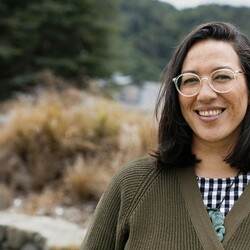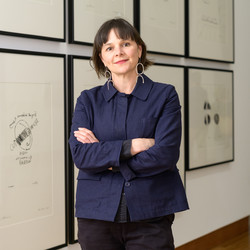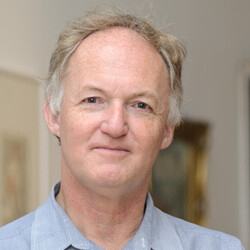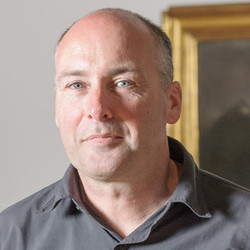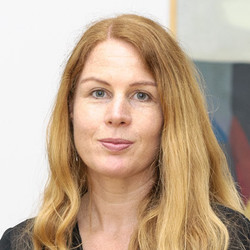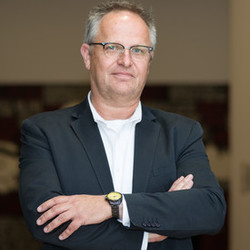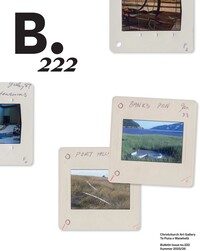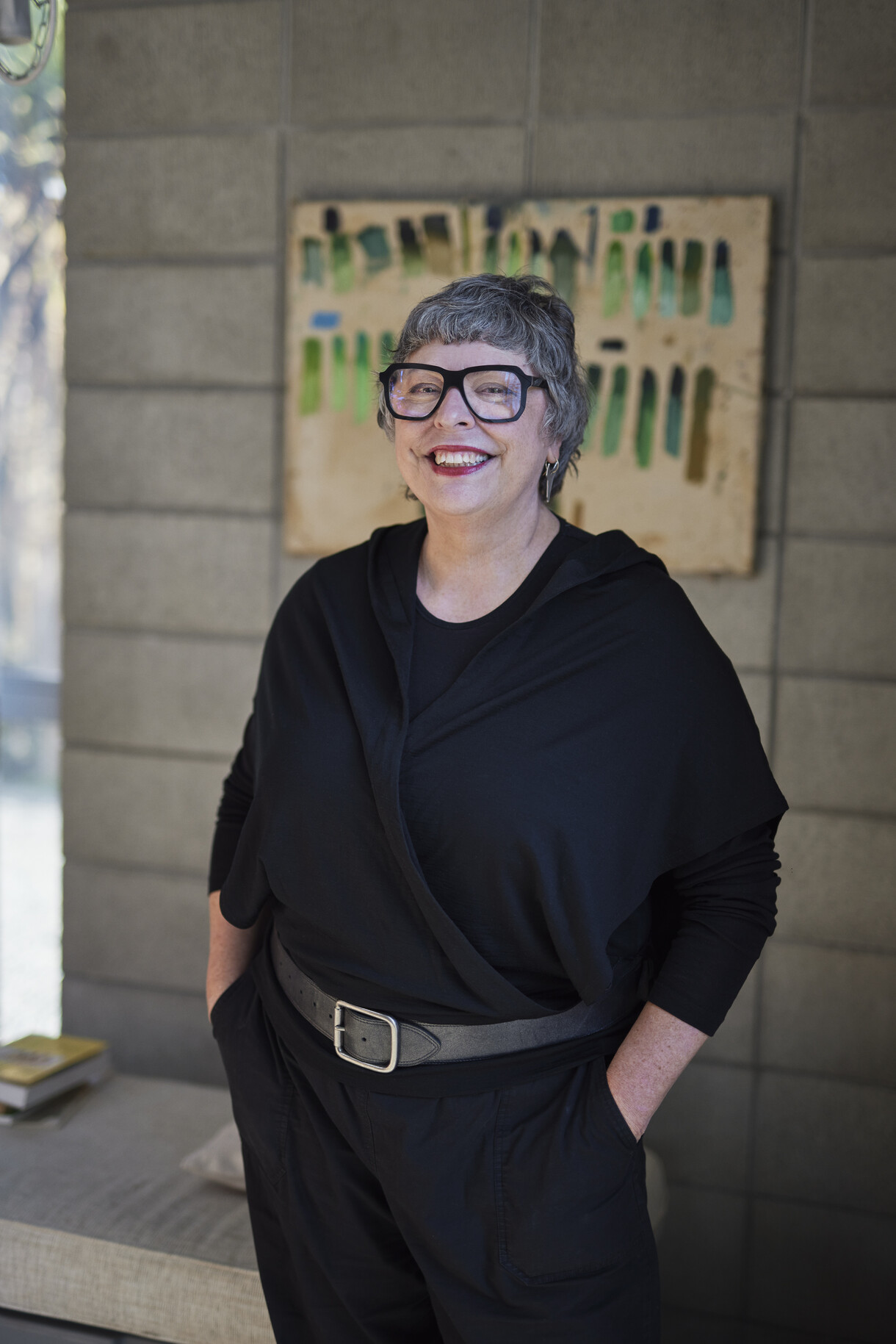Te Mauri o te Puna Springs Into Life
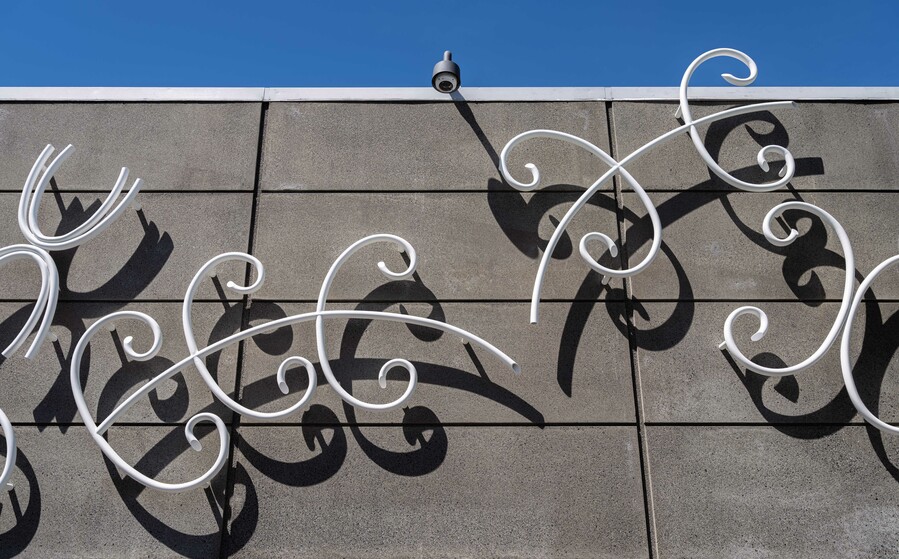
Areta Wilkinson Te Mauri o te Puna (detail) 2025. Powder-coated steel. Project commissioned by Christchurch Art Gallery Te Puna o Waiwhetū, 2025
For more than fifteen years, the Gallery has been commissioning artists to respond to the unique challenges posed by ‘the bunker’ – the brutalist underground carpark entrance on our forecourt. For our current project, we invited Kāi Tahu artist Areta Wilkinson to create a work that could be displayed for five years. Lead curator Felicity Milburn recently spoke with Areta about Te Mauri o te Puna.
Felicity Milburn: Tēnā koe Areta. Ka mihi nui ki a koe i tēnei kōrero. Your works often connect first with place. How did that shape your ideas for this commission?
Areta Wilkinson: I would prefer to say connection to place shapes me, especially if you think about what whenua means, as an umbilical cord that connects a person to Papatūānuku and to hapū. And those concepts of tūrangawaewae – a place to stand, in this case as marks of identity.
One of the reasons I came down to live in Te Waipounamu in 2008 was to understand kaupapa Ngāi Tahu, that is, articulate a Māori methodology in terms of my practice. I felt I had to be here in the takiwā in order to do that, specifically to respond to the whenua and the values of whānau advisors from this place. I really wanted to know, see and feel how my work would change through being in place.
Connection to place, therefore, continues to shape me and my work for this commission – it is a creative whakapapa conversation.
FM: The form and title of this work contain echoes of a water source. What qualities of puna and wai were you hoping to imbue it with?
AW: The provocation for Te Mauri o te Puna is the nourishing spring referenced in the name of the Gallery building, Te Puna o Waiwhetū, in honour of the life-giving artesian waters. The original name for the waterway was set in place by tūpuna, whom I have a whakapapa connection to.
Te Puna o Waiwhetū is a perfect name for the art gallery. The puna is the spring or water source reflecting the stars above, which is a sacred idea related to the spiritual and physical connections between the atua celebrated in Kāi Tahu creation narratives and all life on earth.
The water source Waiwhetū was so important in tribal narratives that it was given a name, and this name was so important it was remembered, passed down and written down. The Gallery was given this name to remember Waiwhetū. This is where we are, where the Gallery stands.
The Gallery’s name also speaks to seeing and imaging – the reflection is an image of stars in the pool, but I understand this from a worldview that will talk to that image as it will talk to the original subject. So an image is potent and active. I unpack this name Te Puna o Waiwhetū also as a kōrero about knowledge and about representation.
The bunker work Te Mauri o te Puna is an image of what I can see (in my mind). It makes real something about the environmental history and unique cultural identity of this site.
The work is like a reflection of a cultural memory – of the once-flourishing springs now beneath these pavements, and the life around those waterways. The mauri of this source to be remembered is vibrant and healthy – it has an abundance of flora and fauna around and in it. The puna is teeming with plants and birds, flying or crawling insects, fresh waterborne larvae and crustaceans.
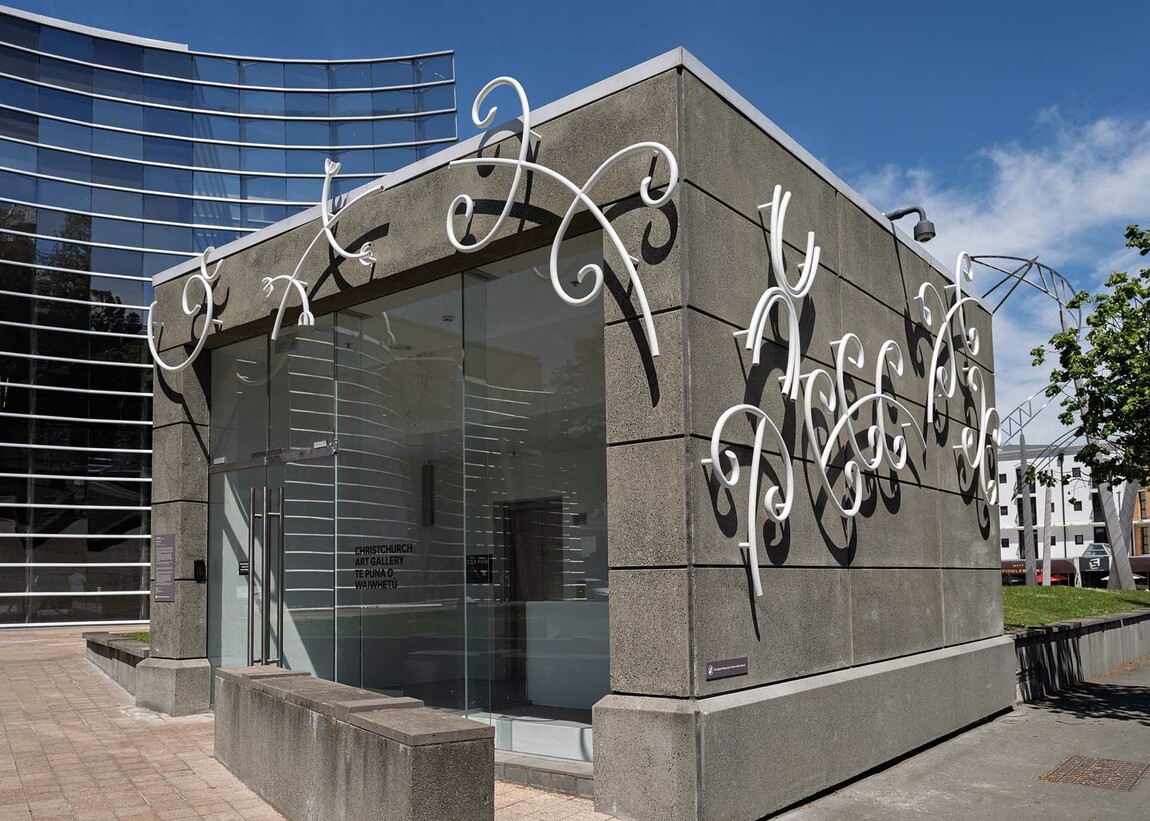
Areta Wilkinson Te Mauri o te Puna 2025. Powder-coated steel. Project commissioned by Christchurch Art Gallery Te Puna o Waiwhetū, 2025
“... first and foremost, the forms were designed for the bunker site to convey splashing water, movement, vitality and delight.”
FM: As a puna surrounded by an abundance of life, this work also draws on the concept of mahika kai. What are the key aspects of that connection for you?
AW: Mahika kai are often resource sites of significance, not only for harvesting food supplies but for the means to thrive in this environment – like the manufacture of seasonal mōkihi watercraft for navigating river ‘roads’. Or the material resources for artistry to create taoka, objects of identity and sacredness, and media to communicate knowledge.
So cultural knowledge is part of a productive mahika kai site, where you’ve also got the maintenance and application of resources happening in place. Metaphorically, the Gallery is like a healthy spring, sustaining artistic knowledge and expressing cultural identity and ideas. A thriving puna is a source of sustenance and wellbeing. A great example of that was the wānanga that took place when Te Rā: The Māori Sail was hosted by the Gallery. People travelled from all around the country to greet and learn from the sail, to try to understand the technology. Expert practitioners were conversing and sharing their own theories, sharing their knowledge. The air was crackling. The Gallery is not just a storehouse – knowledge is activated and uplifting.
FM: Unlike previous works, such as Toro Atua (your 2023 sculpture for Rolleston’s town centre), here you’ve engaged with an existing structure, our carpark bunker. How did that impact your process and thinking?
AW: Site is equally important to both projects. In the conception of Toro Atua, the works are pouwhenua or identity markers for mana whenua, to acknowledge the original village Orariki. Toro Atua shimmers and vibrates with life to express mauri and the breath of Te Hau-kai-takata, the nor’west wind. Three groups of pou assist with wayfinding, celebrating ancient trails across the plains to mahika kai, and as you move across the park at each site mātauraka Māori is revealed.
The carpark bunker is sited above a subterranean structure, beneath that again is a system of springs and waterways of which Waiwhetū is one named source. Above ground, the bunker is a three-dimensional object interacting with pedestrians and vehicles, it can be walked around and looked upon, experienced from different perspectives.
So naturally my puna has to bubble up from the carpark on all four sides. And the Gallery team has helped make that happen.
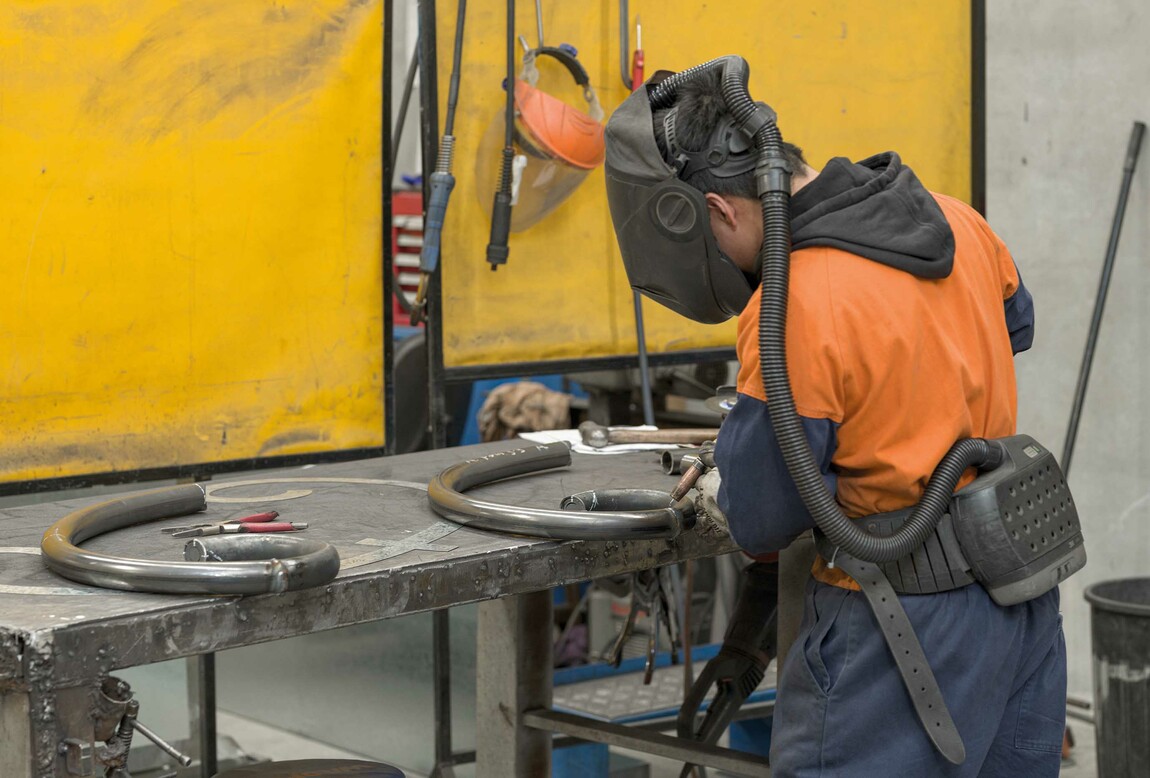
Construction of Te Mauri o te Puna, 2025
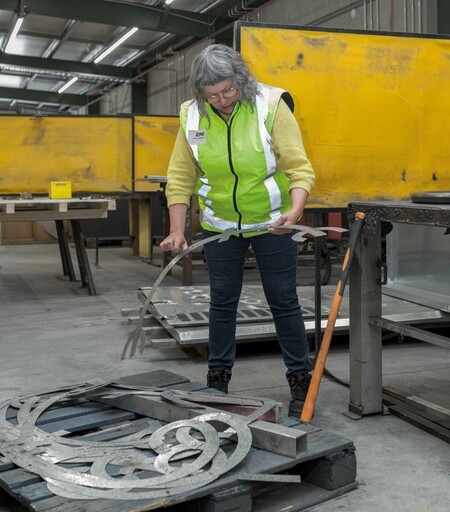
Areta Wilkinson during construction of Te Mauri o te Puna, 2025
FM: Your art practice moves fluidly between adornment and sculpture, including large public commissions. How do the materials you’re using, and the scale a work will be seen at, inform your approach?
AW: Certainly, knowledge from being a maker originally in the field of adornment has helped me understand technical applications, solve problems and communicate intent. Although Te Mauri o te Puna is wall-mounted, it is still made up of three-dimensional objects placed onto a form. I had a model made of Corflute that I would add drawings to. Then I would walk around the model making tweaks to placement until it felt right. I took photos of my drawings to see what they looked like from a distance. Later, scale digital drawings helped me double-check the physical balance and composition. Materials were chosen for aesthetic purposes and budget, but also to endure in the public exterior environment. Art can be dangerous!
Funnily enough, in this particular case the objects created and composed as Te Mauri o te Puna can easily be construed as adornments. Not all designs scale up or down well, but these do, which is a bit of a giggle as I haven’t made jewellery for ages. I can see those objects as smaller brooches going for a walk, so I will have to get busy after this install and make some as jewellery for the whānau to wear.
But first and foremost, the forms were designed for the bunker site to convey splashing water, movement, vitality and delight.
FM: You’ve said that the forms in Te Mauri o te Puna also relate to your own toi Māori history. Can you tell us more about what that means for you?
AW: Over the last five years I have been developing a design system using simple lines and curves. To me, these relate to my toi Māori art history – the ancestral rock art of Te Waipounamu South Island. Appreciating how some superior drawn images on rock shelters communicate using beautiful lines.
My forms here are intentionally abstract yet familiar, suggesting splashing water, thriving flora and fauna – all the life and liveliness around a healthy water source. But I like to think of these figures as the tīpuna of today’s flora and fauna. There is that puna concept again.
Areta Wilkinson spoke to Felicity Milburn in September 2025.
